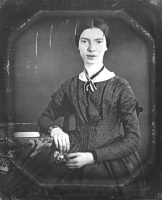 I know what you’re thinking: “Woah, wait! How can nonfiction be creative? Isn’t it all boring, science-y stuff?” Well, get ready, because it is a real genre…and you’re reading it right now!
I know what you’re thinking: “Woah, wait! How can nonfiction be creative? Isn’t it all boring, science-y stuff?” Well, get ready, because it is a real genre…and you’re reading it right now!
Do not despair. You are in good company. Several of my PhD-toting, know-it-all (non-English) professors have asked me what creative nonfiction is. As one particularly arrogant philosophy professor mused, “Isn’t creative nonfiction a misnomer? I just don’t believe it can be a real genre. Writing is either creative or nonfiction, not both.”
While I want to scoff at him, dear readers, I cannot. When I first heard of creative nonfiction, I thought the same thing. I remember looking at the requirements for my creative writing degree and thinking, “Oh, great. A whole class about technical writing. This will suck.” In retrospect, this is hilarious, as creative nonfiction is now my best (and one of my favorite) genres.
Now, if you still don’t know what the heck I’m talking about, sit back and relax. Here is Kate’s Creative Nonfiction 101.
What is creative nonfiction?
Creative nonfiction (abbreviated as creative non or CNF) is a genre of prose writing. In creative nonfiction, the writer recounts a true, personal experience, tells about true events from another person’s life, or conveys true information in an interesting way. The key word here is true — nonfiction means facts.
The creative component comes into play in the way in which the prose is written. Instead of writing a technical essay, the writer conveys the experience or information in a way that reads like fiction. In other words, creative nonfiction details actual events or factual information in a form that is meant for entertainment and education.
 “Tell all the truth but tell it slant”
“Tell all the truth but tell it slant”
As Emily Dickinson wisely advised, creative nonfiction writers convey truth, but with a slant. In order to make a creative nonfiction essay entertaining, sometimes the writer must creatively explain the truth. This can be accomplished in several ways: skipping over parts of a story with little action, dramatizing events, re-ordering events, or filling in details with the “best guess” when the whole truth is unknown. While the goal is to present nonfiction, a little slant can make the story much more gripping and enjoyable for the reader.
What are some examples of creative nonfiction?
The interesting thing about creative nonfiction is that it is not marketed as “creative nonfiction.” Typically, it is marketed in more specific genres. In the same way that fiction is divided into “mystery,” “literature,” “romance,” etc., creative nonfiction is split into “memoir,” “biography,” “travel writing,” “literary journalism,” etc. On the internet, creative nonfiction is most commonly exercised as blogging, which conveys information but is also meant for entertainment. These myriad categories are the reason why most people do not even realize the genre exists, but it does — it is the umbrella that covers all of these smaller genres.
Here are some more specific examples of well-known creative nonfiction works:
- Eat, Pray, Love: One Woman’s Search for Everything Across Italy, India and Indonesia by Elizabeth Gilbert
- In Cold Blood by Truman Capote
- The Immortal Life of Henrietta Lacks by Rebecca Skloot
- Me Talk Pretty One Day by David Sedaris
You can also check out one of my many creative nonfiction pieces, “Kate, Warrior Princess,” for a micro example of how creative nonfiction manifests in a university setting.
The Bottom Line
Creative nonfiction is an overlooked, but highly useful, genre. While its sister genre, fiction, may be given more literary notice, creative nonfiction does something fiction cannot: it gives the reader this world’s truth in the writer’s voice (as opposed to through a narrator, character, or metaphor). Creative nonfiction is the genre of the factual human experience, the genre of “based on a true story.” Now that you have this knowledge…
Go forth and write your truth.
When did you first hear about creative nonfiction? Is it a genre you like to read or write? Would you add any caveats to my description?



Hi kate, an interesting piece. So a philosophy professor doesn’t think his work is creative? Then why does he bother? Some of the most creative people I know are mathematicians who express great leaps of the imagination within a tightly disciplined system of reasoning. Newton, Laplace, Gauss and Godel are not less creative than Austen, Dickens, Elliot or James. The worlds they create are as majestic and inspired as any work of fiction.
Surely all attempts to convey the truth do so with a slant. We are all prisoners of our own ideology, when we speak `the truth’ we are speaking *our* truth, modulated by our conscious or unconscious values, assumptions and rhetorical projects.
All writing, even technical writing, is creative. But some is more creative. I am not sure, however, that creativity is associated with genre rather than with quality within genre. A hackneyed novel with banal plots, poor characterisation and clumsy prose is arguably less creative than an excellent software manual.
LikeLiked by 2 people
Mervyn,
Thank you for your thoughtful reply to my article.
First, to your comment on my philosophy professor, I could not agree more. I will admit, when my professor made that comment to me, I did not think about his field or perspective. I felt a bit insulted in the moment, as if he were disregarding my accomplishment by disregarding the genre. However, in retrospect, it is astonishing to me that he does not see creativity in his field and his own work. I am not closely familiar with philosophy as a field, but I must imagine that stretching one’s mind to grasp the theories and topics involved must require imaginative thinking.
To your comment about truth, I definitely agree that all truth contains a slant. I do not believe that objective truth can exist (outside of scientific fact). Clearly, the truth is subjective to all individuals based on life experiences.
Last, in regards to your final comment on creativity within writing, I feel the need to (once again) agree with you and also clarify. I hope that the impression I gave with this article is not that other genres of writing cannot be creative. I definitely agree that technical and academic writing is filled with creativity, as I have had the privilege to write in both forms (Plus I have edited enough of Daniel’s papers to see his creativity at work in his studies of religion.) I simply term “creative writing” and “creative nonfiction” the way that I do because that is the way writing for art/entertainment purposes is termed in academia.
Now, while I agree that technical and academic writing both require creativity, I would argue that “creative writing,” or writing for artistic purposes, also requires a bit of science. As you suggested, there are certain thematic and structural elements that must be done well (and creatively) for a novel or other artistic work to have quality. However, I believe that we must be careful in mixing the two. Yes, technical, academic, and scientific writing requires some art, but it is mostly science. Just like “creative writing” requires some science but is mostly art.
On a slightly different note, I believe you just may have inspired a whole new article topic, as I see my comment is nearing post length. I shall cease here, but thank you very much for your insights; clearly, they were quite thought-provoking.
LikeLike
Hi Kate,
I came across your ..”Explanation of the Genre” while googling CNF and noted Mervyn’s comments which mentioned a software manual[s]. I’m in the process of writing a software manual myself and wondered where I might find an example of a technical/software manual written in the CNF genre. Any suggestions?
LikeLike
Thanks for reading, Adrienne. Though I could be mistaken, I highly doubt that any software manual would be (or could be) written as creative nonfiction. Like fiction, CNF is a form of narrative prose, while a software manual would require strictly technical writing and no narrative elements. Sorry I can’t be more helpful. Best of luck with your project.
LikeLike